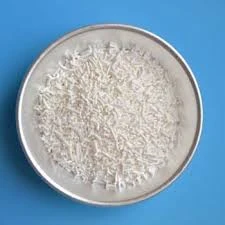
e129 food additive
Understanding E129 Food Additive Uses, Safety, and Controversies
Understanding E129 Food Additive Uses, Safety, and Controversies
The approval of E129 varies across different regions. In the European Union, it is permitted under strict regulations and must be labeled accordingly on food packaging. Consumers are advised to look for the E129 designation to identify products containing this additive. Meanwhile, countries like the United States have also approved its use, although food manufacturers are increasingly moving towards natural alternatives due to consumer demand for cleaner ingredients.
e129 food additive

Concerns regarding the safety of E129 primarily stem from studies linking synthetic dyes to adverse health effects. Some research has suggested a potential connection between food dyes and hyperactivity in children, leading to a push for more stringent regulations or even bans. In the EU, food products containing E129 must include a warning label indicating that the additive may have an adverse effect on activity and attention in children. This requirement reflects increasing awareness among consumers and regulators about food additives’ potential impacts on health.
Moreover, the environmental impact of synthetic dyes, including E129, has garnered attention. The production and disposal of synthetic dyes can contribute to environmental pollution, prompting some manufacturers to seek eco-friendly alternatives. In response to these concerns, the food industry is gradually shifting towards natural colorants, such as beetroot or paprika extracts, which offer color enhancement without the associated risks of synthetic additives.
In conclusion, E129 serves as a powerful tool for food manufacturers aiming to create visually appealing products. While it is deemed safe by regulatory bodies, growing consumer awareness and concerns about artificial additives are driving a transition towards natural alternatives. As consumers become more conscious of their food choices, the demand for transparency and ingredient awareness will likely continue to shape the future of food colorings, with E129 playing a pivotal role in this ongoing conversation.
-
Understanding Synthetic Rubber OptionsNewsApr.27,2025
-
Trichloroisocyanuric Acid: Essential for Clean and Safe WaterNewsApr.27,2025
-
Sodium Dichloroisocyanurate: Key to Safe Water TreatmentNewsApr.27,2025
-
Sodium Acid Pyrophosphate: Essential in Modern Food ProcessingNewsApr.27,2025
-
Essential Water Treatment ChemicalsNewsApr.27,2025
-
Denatured Alcohol and Its Industrial UsesNewsApr.27,2025
-
The Versatile Uses of Sodium BicarbonateNewsApr.24,2025
Hebei Tenger Chemical Technology Co., Ltd. focuses on the chemical industry and is committed to the export service of chemical raw materials.
-

view more DiethanolisopropanolamineIn the ever-growing field of chemical solutions, diethanolisopropanolamine (DEIPA) stands out as a versatile and important compound. Due to its unique chemical structure and properties, DEIPA is of interest to various industries including construction, personal care, and agriculture. -

view more TriisopropanolamineTriisopropanolamine (TIPA) alkanol amine substance, is a kind of alcohol amine compound with amino and alcohol hydroxyl, and because of its molecules contains both amino and hydroxyl. -

view more Tetramethyl Thiuram DisulfideTetramethyl thiuram disulfide, also known as TMTD, is a white to light-yellow powder with a distinct sulfur-like odor. It is soluble in organic solvents such as benzene, acetone, and ethyl acetate, making it highly versatile for use in different formulations. TMTD is known for its excellent vulcanization acceleration properties, which makes it a key ingredient in the production of rubber products. Additionally, it acts as an effective fungicide and bactericide, making it valuable in agricultural applications. Its high purity and stability ensure consistent performance, making it a preferred choice for manufacturers across various industries.











